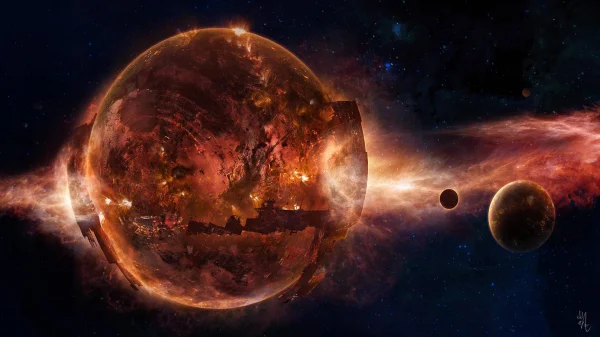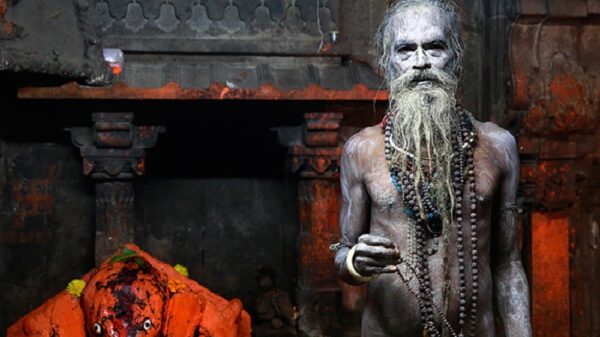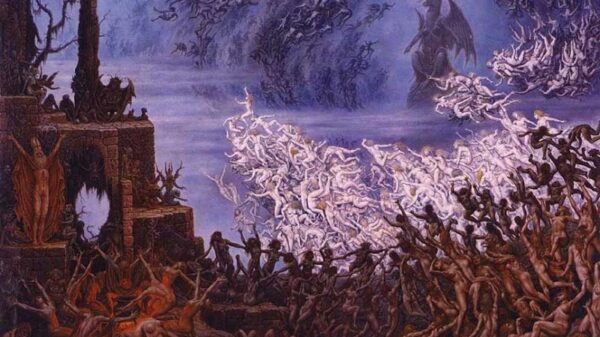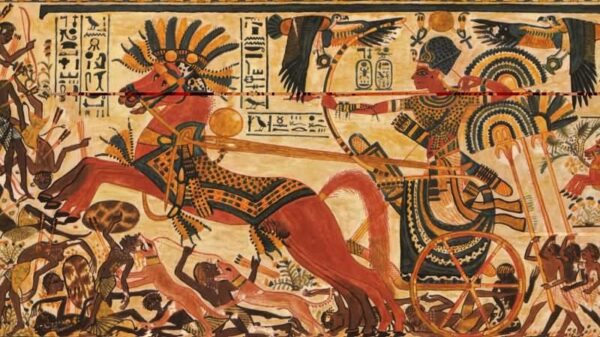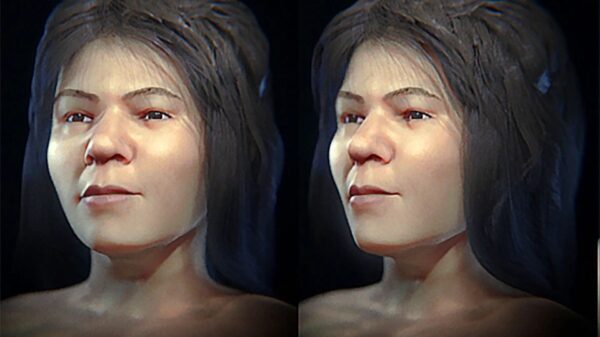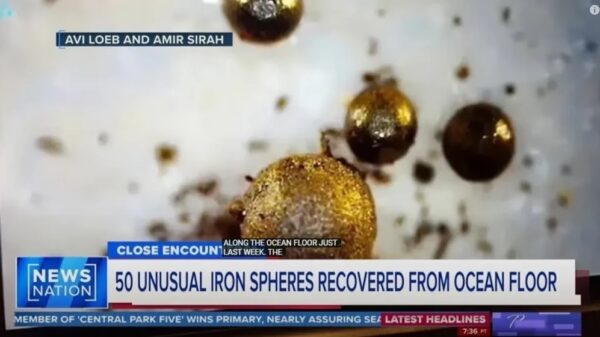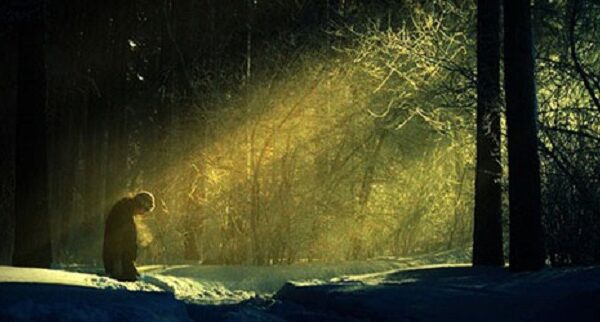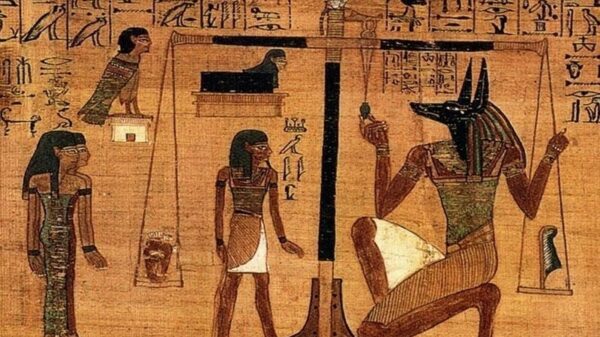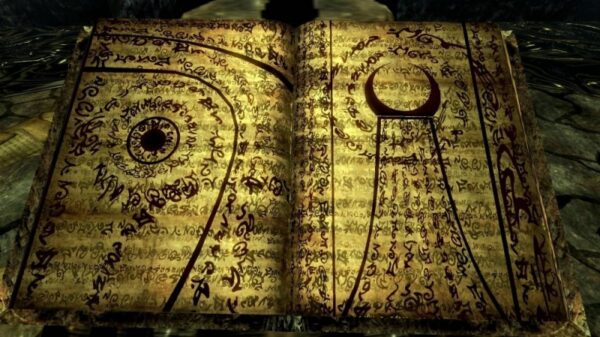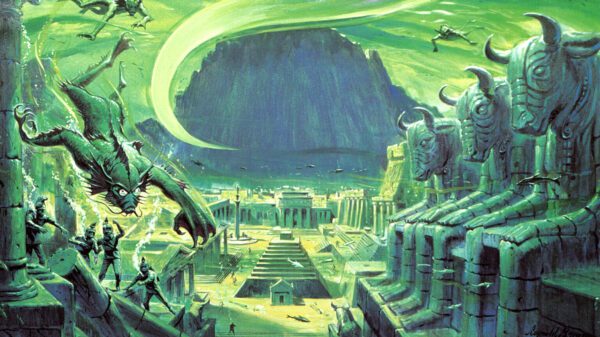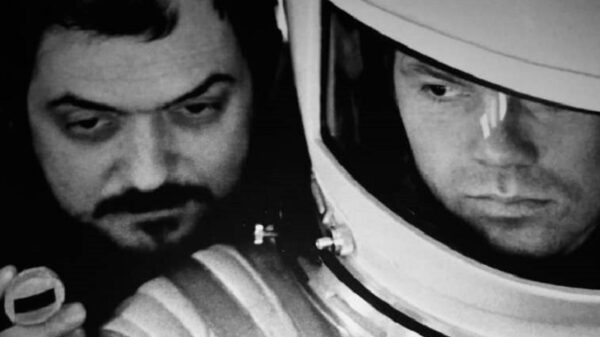A harem for the afterlife. The six women distributed circularly around the central tomb are believed to be the concubines of this high-status man.

The site of the find
The complex tomb has been found in Saxony-Anhalt, near the municipality of Brücken-Hackpfüffel, Germany. Its main member would have been a Germanic leader or prince who lived 1,500 ago, during the Great Migration of tribes that followed the fall of the Western Roman Empire.
Experts say it is the most important archaeological find in the country in 40 years. And while it came while workers were clearing a piece of land to set up a new chicken farm, every effort has been made so far to keep the exact location secret to prevent looting.
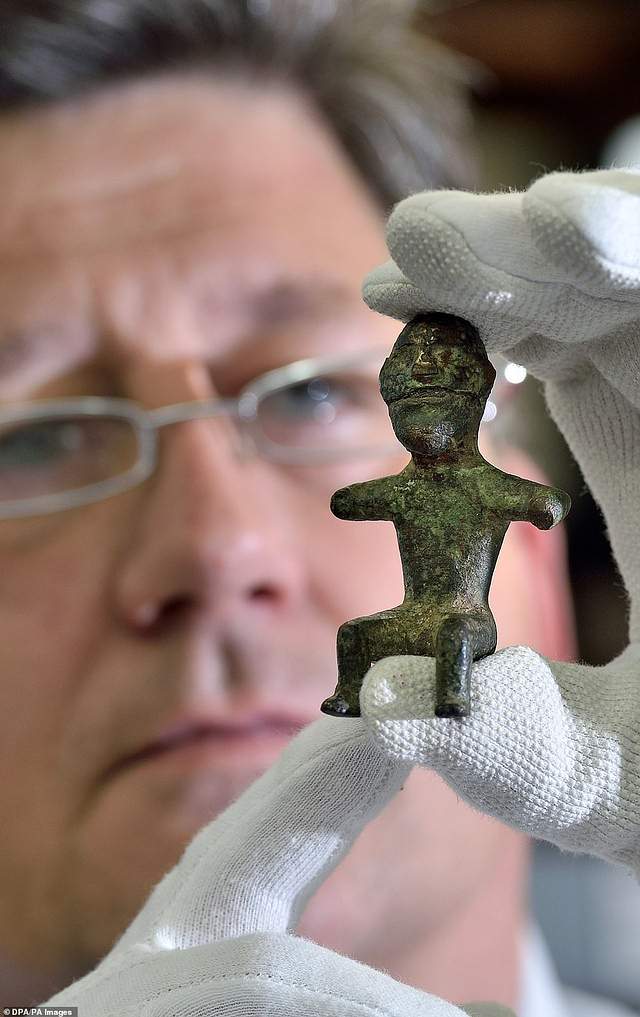
Among the objects unearthed is the statue of this Germanic god
Despite the high rank of the Germanic prince, the researchers have yet to extract his remains, which would be as ashes inside a large bronze cauldron in the central grave, which is 4 meters long by 4 wide and is surrounded by the bones of six women distributed radially, like the needles of a clock.
The researchers believe that these females could be the concubines or widows of the central subject, although it is unknown if they were sacrificed or if they ritually committed suicide for burial.

The cauldron had to be lifted with the help of a block and a crane. It has been taken to a laboratory to be opened and analyzed
There was also a magnificent trousseau and the remains of eleven animals, including cattle, horses and dogs.
Also, beyond the central burial mound, in the vicinity are several more humble tombs, in a cemetery made shortly after to honor the high-status German.
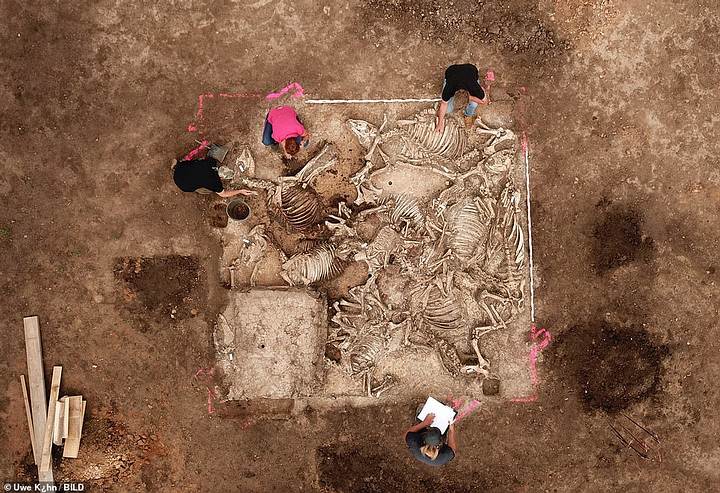
Animal remains discovered
“The cemetery has almost 60 graves,” detailed archaeologist Arnold Muhl. «In them, among other things, we have found a decorated glass bowl, a spindle wheel, several silver brooches, a sword and the iron umbo of a shield. Also hundreds of gold coins from the Eastern Roman Empire.
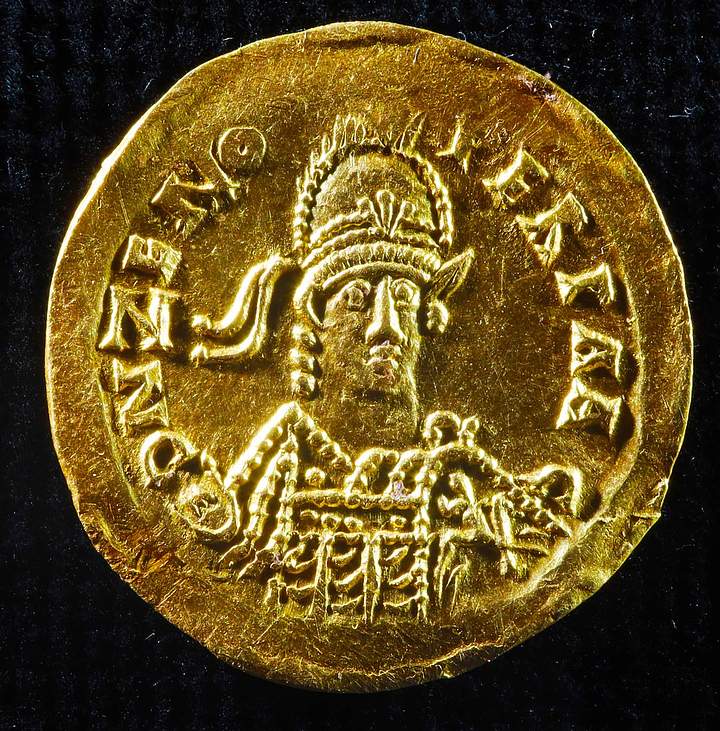
Gold coin with the face of the Roman emperor Zeno
“The glass pieces came from Gallo-Roman workshops along the Rhine, only they mastered this technique,” he added.
The excavation site is in excellent condition due to its unique location, which inadvertently protected it from damage and looters. The terrain itself was a natural hollow that, over time, was covered by more than 1 meter of sediment.

Two incredibly well preserved brooches in the shape of the hammer of the Germanic god Thor
By analyzing the bones and artifacts, scientists hope to gain a concrete perspective on the lives of the people who lived during the times of the Great Migration.




